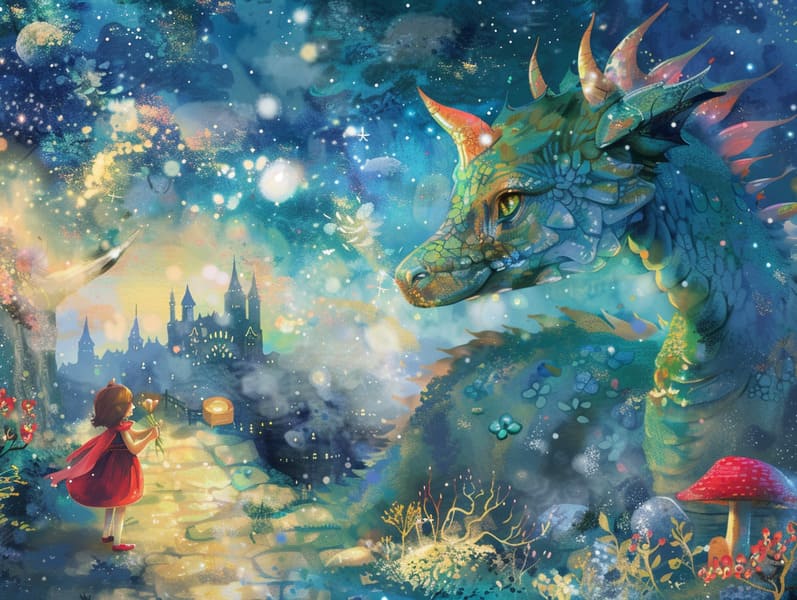Uncovering the Past of Timeless Fairy Tales and the Enduring Attraction.
Uncovering the Past of Timeless Fairy Tales and the Enduring Attraction.
Blog Article

Timeless fairy tales have historical significance. These narratives have been told from one generation to the next far before they were ever transcribed. They arose from a variety of civilizations, including Asian traditions. They were initially narrated among older generations, often carrying themes and messages related to the societal norms and beliefs of the time.
Jacob and Wilhelm Grimm, Jacob and Wilhelm Grimm, were among the first to compile and publish many of these beloved stories. Their compilation, "Grimm's Fairy Tales," included classics like "The Story of Cinderella," "Hansel and Gretel," and "Schneewittchen," which have since become classics in the world of famous fairy tales. Similarly, Hans Andersen's fanciful stories, such as "The Mermaid," and "The Little Duckling," have won hearts worldwide, solidifying their place in the pantheon of timeless fairy tales.
Though they are centuries old, these tales remain as applicable as ever, especially as bedtime stories for kids. These enchanting tales are now available in numerous formats, including beautifully illustrated books, charming animations, and online storybooks.
Their lasting presence can be attributed to several captivating elements:
Valuable Lessons: Ancient fairy tales often provide important moral lessons. Narratives like "The Shepherd Boy and the Wolf" teach the importance of honesty, while "The Hare and the Tortoise" point out the qualities of persistence and humbleness. These narratives offer the young clear distinctions between virtue and vice, molding their moral compass in a gentle yet lasting way.
Sympathy and Perception: Traditional fairy tales frequently illustrate beings facing trials and tribulations, provoking children to sympathize with their struggles and root for their triumphs. For instance, "The Tale of Beauty and the Beast" reveals the virtue of looking beyond appearances to understand the inner self of a soul, encouraging empathy and insight.
Cultural Appreciation: Many ancient fairy tales are steeped in the cultural contexts from which they arose. Reading these stories can provide illuminating insights into different traditions, promoting a sense of world appreciation and awareness.
Fantasy and Imagination: The extraordinary elements in traditional fairy tales—spells and potions—stimulate children’s visions and dreams. These tales carry readers to fantastical realms, boosting inventive thinking and a sense of enchantment that continues a lifetime.
Classic fairy tales are not only enchanting but also educational. They serve as delightful tools in fostering various mind and heart abilities in little ones. When ancient fairy tales are spoken, they develop speaking abilities by presenting new linguistic elements and intricate sentence structures. This practice also fosters auditory skills and attentiveness, as young ones hang on every word, keen to see what happens next.
Furthermore, talking about the themes and characters of old fairy tales can improve cognitive skills and thinking skills. Little ones are instructed to discern patterns, expect results, and get cause and effect. These explorations also assist the young voice their thoughts and feelings, advancing their emotional intelligence.
In today’s technological era, the accessibility of online storybooks has made these stories more available than ever. Internet resources and applications present ample collections of traditional fairy tales that can be perused or listened to anytime, anywhere. Fairy tales told out loud are particularly sought after, giving an charming way for young ones to engage with these alluring stories. Read-aloud books and narrated videos take characters and settings to life, often complemented by delightful sound effects and soundtracks that improve the storytelling journey.
The everlasting appeal of timeless fairy tales lies in their ability to evolve to present eras while keeping their underlying messages. Contemporary adaptations of these fairy tales often showcase more varied characters and modern settings, making them understandable to today’s audience. However, the essential messages of valor, generosity, and fair-mindedness remain unchanged, continuing to reach get more info young listeners of all ages.
Timeless fairy tales also offer a sense of ease and homeliness. They offer a methodical narrative with a distinct beginning, middle, and end, often concluding with the wrap-up of conflicts and the triumph of virtue over vice. This consistency can be consoling for kids, delivering a sense of assuredness in an constantly changing world.
Traditional fairy tales continue to enthrall and teach new generations, maintaining their grandeur and pertinence in modern society. As children's night stories, they impart a perfect blend of charm and understanding, aiding moral values, empathy, and creativity. The existence of online storybooks and the commonness of fairy tales narrated guarantee that these ancient tales remain obtainable to new generations.
By protecting and sharing these tales, we continue to extol the rich tapestry of tradition and cultural heritage. Whether you are browsing a vibrantly illustrated book, accessing a web-based collection, or listening to an sound book, the magic of classic fairy tales is always within reach. These narratives highlight of the unceasing presence of narratives and its ability to tie us across epochs and places.
Even if you are browsing a artistically illustrated book, perusing a cyber library, or listening through an audiobook, the attraction of famous fairy tales is always within reach.
These stories show us of the timeless force of tales and its ability to link us across eras and regions, casting a charm that captivates and teaches alike.